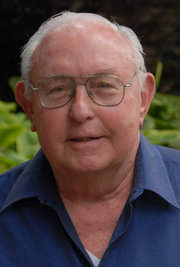Among the Last of the Titans: Aspects of Professor Anson Rainey’s Life and Legacy (1930-2011)

The contours of the life of Professor Anson Rainey are significant, well known, and well documented. He was a force of nature, and he was beloved, respected, revered, and (on occasion) feared. Within the field, he was a polymath. He was among the most capable and authoritative scholars of the Northwest Semitic languages. Indeed, he was as comfortable in Ugaritic, Phoenician, and Aramaic as he was in Old Hebrew. Moabite and Ammonite were subjects of great interest for him and he knew the preserved texts in these languages so very well. In addition, he was also a most capable scholar of Egyptian and Coptic. Moreover, he was also a formidable scholar in various fields and subfields of Assyriology, and his contributions to the Amarna Letters are substantive, diverse, and legion; arguably these are some of his most enduring contributions. Of course, among his greatest passions was historical geography, and it is my opinion that he had no peers in this field. Furthermore, he had also spent many seasons excavating, and he knew the archaeology of much of the ancient Near East so very well. Of course, in addition to his fluency in several European languages, he was also fluent in both modern Hebrew and also modern Arabic. I know of no one who was so capable in so many things. With his death, we are witnessing the loss of one of the last of the polymath “titans” of the field.
Of course, throughout much of his career, he was an institution at Tel Aviv University, first teaching full-time there in 1964 and continuing at Tel Aviv until his retirement from full-time teaching there in 1998. He was also a professor, and in many ways an institution, at the American Institute of Holy Land Studies (now Jerusalem University College), something about which he was always very proud. Ultimately, research was really the bone and marrow of life for Anson. That is, his institutional affiliations and his travels revolved around his publication projects. And few can claim to have been as productive as he. He authored more than a dozen volumes, translated nearly that many more, he authored in excess of two hundred scholarly articles, wrote numerous reviews, and presented more than eighty conference papers. Not so very long ago, he told me that many students that were with him at Brandeis University (his doctoral alma mater, 1962) had earned their degrees and they were never heard from again. He considered this to be an utter waste of a good education. Anson published and presented papers and he believed this was the best course of action. One could say that Anson practiced what he preached. That is, Anson was a most assiduous, productive scholar.
Philologists are often given to Wanderlust, and this was certainly the case for Professor Anson Rainey. For example, he traveled to Berlin and collated at the Vorderasiatisches Museum and to Cairo to collate at the Cairo National Museum. Moreover, he collated texts in Jordan, and he collated at both the British Museum and the Ashmolean Museum. Within the United States, he collated at the Metropolitan Museum (New York) and the University of Chicago. He was also a visiting scholar at various institutions, including Harvard University (1976-77), the University of Pennsylvania (1983-84; 1988-89; 1995-96), the University of California Los Angeles (2001), Konkuk University in Seoul, Korea (2002), and the University of Melbourne, Australia (2002).
During the course of his life, Anson’s relationships with people were always of great importance to him. He would often mention his great respect, even admiration, for the work and person of W. Moran (of Harvard). In fact, in many ways, he considered himself to be a student of Moran and he understood himself to be building on the work and legacy of Moran. Moreover, he often spoke with pride about his tutelage at the feet of H. J. Polotsky (of Hebrew University) in Egyptian. Furthermore, Anson’s colleagues and students always loomed large in his worldview. He reminisced about Y. Aharoni with nostalgia so profound that I have rarely seen it equaled. And he would note the accomplishments of his own students with pride, touting them often. Through the years, many, including me, have felt that Anson was among the most accessible, kind, supportive scholars in the field. He was always available for conversation, dialogue, and I have long treasured the things that I learned from him. Many have long said that they felt similarly. Of course, Anson also seemed to take it rather personally if someone close to him differed with him about something he considered to be all too clear. And he was consistently candid about such things. But I suppose that this is a reflection of the fact that he genuinely cared deeply about the field and about the people in it. The field was important to Anson, paramount even. He wanted the field to get it “right.”
Life is often a pilgrimage and this was the case for Professor Anson Rainey. The scholarship he produced is among the most original, substantive in the field. The personal and religious trajectory of his life is fascinating in and of itself. As I reflect on him, and his death on February 19th, it is not primarily Anson the productive scholar that I shall miss, though I shall miss this. Rather, it is the departure of Anson the mentor, friend, and colleague that is most difficult.
Christopher Rollston


Recent Comments